AirBaltic
 |
||||
|
||||
| Founded | 1995 | |||
|---|---|---|---|---|
| Hubs |
|
|||
| Frequent-flyer program | Baltic Miles | |||
| Fleet size | 31 (+6 orders and 4 options) | |||
| Destinations | 74 | |||
| Parent company | Government of Latvia | |||
| Headquarters | Riga, Latvia | |||
| Key people | Bertolt Flick (CEO) | |||
| Website | http://www.airbaltic.com | |||
A/S Air Baltic Corporation, operating as AirBaltic (styled as airBaltic), is the Latvian flag carrier airline, operating after the low-cost carrier model, with its head office on the grounds of Riga International Airport in the capital, Riga.[1] Its main hub is at Riga International Airport with a secondary hubs at Vilnius International Airport and Lennart Meri Tallinn Airport.
Contents |
History
The airline was established on 28 August 1995 with the signing of a joint venture between Scandinavian Airlines (SAS) and the Latvian state. Operations started on 1 October 1995 with the arrival of the first Air Baltic aircraft, a Saab 340, at Riga, and that afternoon, the plane made the first passenger flight for Air Baltic.[2]
In 1996, the airline's first Avro RJ70 was delivered; and Air Baltic joined the SAS frequent flier club as a partner. 1997 saw the opening of a cargo department and, in 1998, the airline's first Fokker 50 plane was delivered. The adopted livery was mainly white, with the name of the airline written in blue on the forward fuselage, the 'B' logo being heavily stylized in blue checks. The checker blue pattern was repeated on the aircraft tailfin.
In 1999, Air Baltic became a joint stock company, and all of their Saab 340s were replaced by Fokker 50s. By September, the airline had begun operating under the European Aviation Operating Standards, or JAR ops. Air Baltic welcomed the new millennium by introducing new uniforms and opening a cargo center at Riga's airport.
The first Boeing 737-500 joined the fleet in 2003, and on 1 June 2004, Air Baltic launched services from the Lithuanian capital, Vilnius, initially to five destinations. In October 2004, Air Baltic was rebranded as AirBaltic. Their present livery consists of an all-white fuselage and lime tailfin. AirBaltic.com is displayed on the forward upper fuselage, and the word "Baltic" is repeated in white on the lower part of the tailfin.
In December 2006, the first Boeing 737-300 joined the fleet and was configured with winglets. In July 2007, AirBaltic introduced an online check-in system.[3] It was the first online check-in system in the Baltic states. In Spring 2008, two long-haul Boeing 757 joined the existing AirBaltic fleet. On 10 March 2008, it was announced that in the next three years the airline would acquire new aircraft, experiencing the largest fleet expansion in the company's history. The new additions will be next generation Q400 aircraft.
AirBaltic previously had strong links with SAS, which owned 47.2% of the airline (the Latvian state holds the remainder) until January 2009, when they sold all their shares to AirBaltic management. It operates frequent flights to SAS hubs in Copenhagen, Oslo and Stockholm. The airline formerly used the SAS EuroBonus frequent flyer programme, but now has its own: BalticMiles. Some products and services are still shared with SAS, including co-ordinated timetabling and shared airport lounges.
AirBaltic is not a member of any airline alliance. At the moment, however, codeshare agreements are in place with several Star Alliance airlines and others.
As of September 2007, AirBaltic employs 948 people.[4]
July 2010, the company announce the possible buy-out of Finncomm Airlines, a Finnish regional airline operating a young fleet of ATR and Embraer aircrafts.[5]
Operational Statistics
AirBaltic ended 2009 year with 14 million lats profit (about 20 millions EUR). Total number of airBaltic flights in 2009 was 45,967 and its average cabin factor was 68%. The number of airBaltic passengers reached 2.76 million (6% increase in comparison to 2008). No audited annual report has been published.
In 2007, AirBaltic served 2,007,150 passengers, an increase of 27% compared to 2006. In 2007 AirBaltic increased number of its flights to 36,804 (27% increase over 2006) and its average cabin factor was 63% (3% increase over 2006). Turnover for 2007 reached 159.43 million lats (226,85 million EUR), up 38% compared to 2006. However, its net profit decreased by 69% and was 1.24 million lats (1.76 million EUR). The decrease is attributable to the overall expansion of the airline and its services.
Turnover for 2006 reached 115.9 million lats (164.9 million euro), an increase of 37% compared to 2005. At FYE 2006, operational result (EBITDAR) reached 16.9 million lats (24.0 million EUR), a 65% increase from 2005 (9.7 MLVL/13.8 MEUR). The airline's net profit for 2006 was 4.305 million lats (6.125 million euro) vs. −1.14 million lats (−1,62 million euro) a year before. As of 9/2007 AirBaltic earned 5.1 million lats in pre-tax profit (7.2 million EUR) of 41% compared to 2006.
Destinations

AirBaltic operates 72 direct flights from Riga (some of them are seasonal), 13 from Vilnius, 7 from Tallinn, as well as non-stop flights on the routes Bergen–Stavanger, Kuopio–Tampere, Kuopio–Lappeenranta, Kuusamo–Lappeenranta, Oulu–Turku, Oulu–Stockholm, Rovaniemi–Tampere, Vaasa–Umeå.
AirBaltic has codeshare agreements with the following airlines:
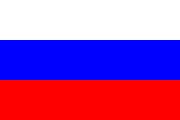 Aeroflot (SkyTeam)
Aeroflot (SkyTeam)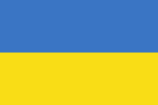 Aerosvit Airlines
Aerosvit Airlines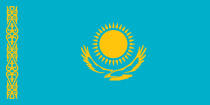 Air Astana
Air Astana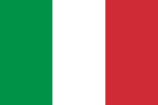 Alitalia (SkyTeam)
Alitalia (SkyTeam)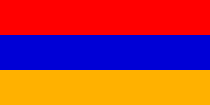 Armavia
Armavia Austrian Airlines (Star Alliance)
Austrian Airlines (Star Alliance)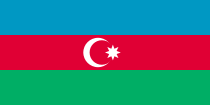 Azerbaijan Airlines
Azerbaijan Airlines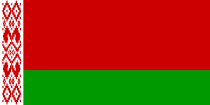 Belavia
Belavia.svg.png) Brussels Airlines (Star Alliance)
Brussels Airlines (Star Alliance) Georgian Airways
Georgian Airways Malév Hungarian Airlines (oneworld)
Malév Hungarian Airlines (oneworld)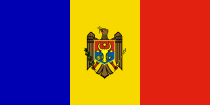 Moldavian Airlines
Moldavian Airlines Rossiya
Rossiya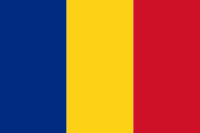 TAROM
TAROM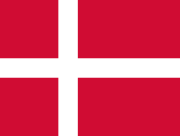
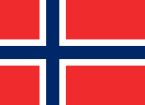
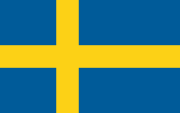 Scandinavian Airlines (Star Alliance)
Scandinavian Airlines (Star Alliance)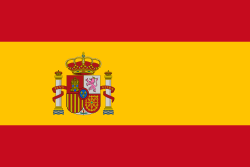 Spanair (Star Aliance)
Spanair (Star Aliance) Uzbekistan Airways
Uzbekistan Airways
Awards
The Latvian airline airBaltic was chosen for anna.aero ANNIES Award [6] as Europe's largest flag carrier by new routes. In Europe, CIS and the Middle East airBaltic operates 27 routes more in the summer season of 2010, compared to summer 2009.[7]
Inflight magazine
AirBaltic's inflight magazine, Baltic Outlook, is published twelve times per year by SIA Rīgas laiks, and can be found in the seatback pockets of every seat. Passengers can take the magazine with them when they disembark their flights. There are only English articles in the magazine. The first edition of Baltic Outlook magazine was published in 2003. There is also a selection of domestic and international newspapers on all flights, except for flights within the Baltics.
Inflight service
On some flights, AirBaltic offers a buy on board menu offering food and drinks for purchase.[8]
Fleet
Current
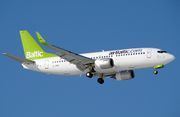
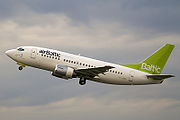
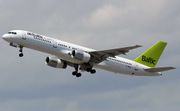
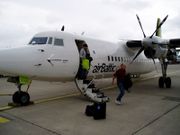
The AirBaltic fleet includes the following aircraft (at June 2010):[9]
| Aircraft | In Service | Orders | Options | Passengers | Notes |
|---|---|---|---|---|---|
| Boeing 737-300 | 8 | 0 | 0 | 149 | |
| Boeing 737-500 | 10 | 0 | 0 | 120–126 | |
| Boeing 757-200 | 2 | 0 | 0 | 200 | |
| Bombardier Dash 8 Q400 | 2 | 5 | 4 | 76 | |
| Fokker 50 | 11 | 0 | 0 | 46–52 |
In May–June 2010, AirBaltic leased a Fokker 70 and Fokker 100 from Carpatair and two Fokker 100 from Blue Line (airline). As of August 2010, AirBaltic leased a MD-87 from Spanish wet-lease company, IMDairways.
AirBaltic was in a position to announce to airline industry a wish to take 1.4 billion EUR loan for purchase of new fleet – 30 brand new airplanes. The choice is between Airbus and Boeing and over the last months Riga is visited by high officials of Boeing and Airbus. The final decision will be announced circa October this year.
Retired fleet
| Aircraft | Total | Operated | Notes |
|---|---|---|---|
| Saab 340 | 2 | 1995–1999 | |
| Avro RJ70 | 3 | 1996–2005 | |
| Boeing 737-500 | 2 | 2003–2010 | |
| Fokker 50 | 1 | 2005–2006 |
References
- ↑ "airBaltic in Riga." AirBaltic. Retrieved on 16 January 2010.
- ↑ http://www.airbaltic.com/public/company_history.html
- ↑ http://www.airbaltic.com/public/31274.html
- ↑ "Directory: World Airlines". Flight International: p. 69. 2007-03-27.
- ↑ http://www.yle.fi/uutiset/news/2010/07/latvian_airline_interested_in_finncomm_1835832.html
- ↑ anna.aero. "Introducing the Euro annies – proper awards based on science, statistics and evidence". anna.aero Airline News & Analysis. http://www.anna.aero/2010/05/12/the-euro-annies/.
- ↑ Riga (13.05.2010). "airBaltic Awarded as Europe’s Largest Flag Carrier by New Routes". airBaltic. http://www.airbaltic.com/public/43869.html.
- ↑ "airCafe." AirBaltic. Accessed 30 October 2008.
- ↑ http://www.airbaltic.com/public/fleet.html
External links
 Media related to AirBaltic at Wikimedia Commons
Media related to AirBaltic at Wikimedia Commons- Official website
|
|||||||
|
||||||||||||||||||||||||||||||||||||||||||||||||||||||||||||||||||
|
|||||